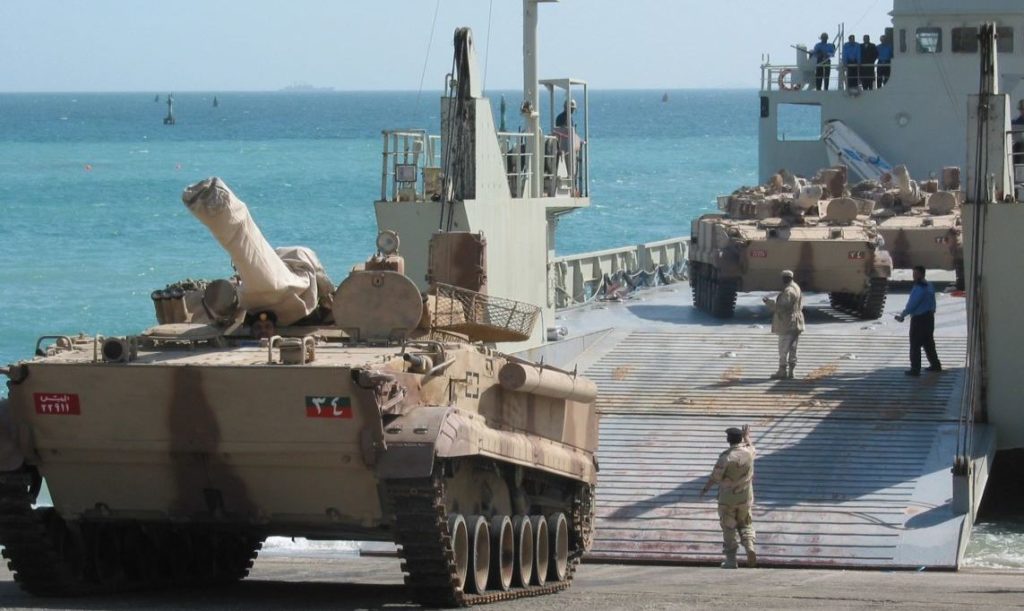
Written by Andrei Akulov; Originally appeared at strategic-culture.org
Dubai Airshow 2017, one of the largest and most successful air shows in the world, ended on Nov.16, having drawn over 79,000 trade visitors, up around 20% over the last version of the event in 2015. The total order tally is $113.8 billion in orders. It nearly tripled from the $37.2 billion signed two years ago.
Russia’s exposition at the Dubai Airshow 2017 included the combat helicopter Ka-52, multi-mission fighter MiG-29M, Su-35 supermaneuverable air defense fighter, Be-200 multipurpose amphibious aircraft, combat-transport helicopter Mi-35M, long-range air defense system S-400 Triumph, and short-range air defense missile system Pantsir–S1. The ‘Russian Knights’ aerobatic demonstration team performed extraordinary stunts riding through the skies to greatly impress spectators.
The United Arab Emirates (UAE) is interested in procuring the Sukhoi Su-35 multi-role fighter. The country is considering the purchase of 10 or more of such aircraft. The UAE and Russia signed a letter of intent on the purchase of Su-35 fighter jets in Feb. 2017. The talks are in progress. The Emirates will be the second country after China to buy the plane.
The UAE has already purchased Russian ground weapons, such as BMP-3 infantry combat vehicles and Pantsir S1 air-defense systems. In February, the Emirates entered into military contracts with Russia worth $1.9 billion. The deal includes 5,000 anti-armor missiles in addition to training and logistic support. The UAE started talks with Rostec company on the development of light fighter based on the MiG-29 twin-engine aircraft with development set to kick off in 2018.
The military cooperation with the UAE is a good example to illustrate the increasingly growing demand for Russian weapons in the Middle East. Orders from Arab countries account for roughly 20 percent of Russian weapons’ exports. Last year, Russia delivered more than $1.5 billion in arms to Algeria, $37 million to Egypt, $374 million to Iran and $300 million to Iraq. Today, the Russia’s portfolio of weaponry orders from the countries of the region is $8 billion. In 2017, the Russian defence industry has been making major inroads in the Middle East and North Africa. Bahrain, Egypt, Morocco, Saudi Arabia, the United Arab Emirates and Tunisia are interested in purchasing Russian weapon systems.
This year, Moscow started delivery of 50 MiG-29 fighter aircraft to Egypt. Cairo is to start receiving 46 Ka-50 combat helicopters. It was reported in September that Algeria is going to buy over 300 Russian-made BMPT-72 Terminator-2 tank support combat vehicles (TSCV) in order to support T-90SA main battle tanks bought from Russia earlier. Now, the Algerian military uses technical vehicles equipped with Kornet ATGM launchers and ZSU Shilka self-propelled, radar guided anti-aircraft weapon systems.
In early October, Russia had signed a number of landmark arms contracts with Riyadh, following President Vladimir Putin’s talks with Saudi King Salman bin Abdulaziz Al Saud. The deal includes the S-400 anti-aircraft missile system, as well as Kornet-EM anti-tank missile systems, TOS-1A “Buratino” heavy flame systems, AGS-30 grenade launchers and Kalashnikov AK-103 assault rifles. The parties agreed to organize the licensed production of Kalashnikov AK-103 assault rifles and ammunition in Saudi Arabia.
On September 12, Moscow and Ankara reached an agreement on the delivery of S-400 systems to Turkey, a NATO member. Czech Gen. Petr Pavel, the chairman of NATO’s Military Committee, recently said that Turkey’s purchase of the S-400 may bar it from any integrated air-defense system with NATO allies but Ankara stands tall, refusing to succumb to pressure.
The already agreed on sales of S-400 air defense system to Saudi Arabia and Turkey are groundbreaking deals. The system appears to be in great demand internationally, including India, not a Middle East country but a very important customer. No way would Russia miss out on its slice of air defense systems’ market share.
Bahrain and Russia are also in talks on the purchase of S-400. Further arms deals will be discussed during the talks with Bahraini Prince Nasser bin Hamad Al Khalifa, commander of the country’s Royal Guard, who is expected to visit Russia soon.
Morocco is standing in line to acquire the S-400. Rabat and Moscow are in talks on the Sukhoi Su-34 tactical bomber and Amur-1650 diesel-electric submarine deal.
Last month, Russia and Qatar signed a memorandum-of-understanding (MoU) calling for increased military and technical cooperation. Doha has recently expressed interest in purchasing the S-400 missile defence system.
It’s not S-400 only. Russian weapons, especially aircraft and air defense systems, have proven to be a cost effective alternative to much more expensive Western systems. They are reliable and have better characteristics. The military campaign in Syria demonstrated they could be used to alter the course of a high-stakes conflict. With Syria having become a department store window displaying the latest in Russian weapons systems offered for sale to other countries, Moscow is significantly expanding its arms sales to the Persian Gulf states with their leaders going with greater regularity to Moscow.
All in all, the spike in Middle East arms sales is a success story for Russia’s defense industry. A big exporter of natural resources, Russia also exports high-tech products with many countries in line to purchase them.





